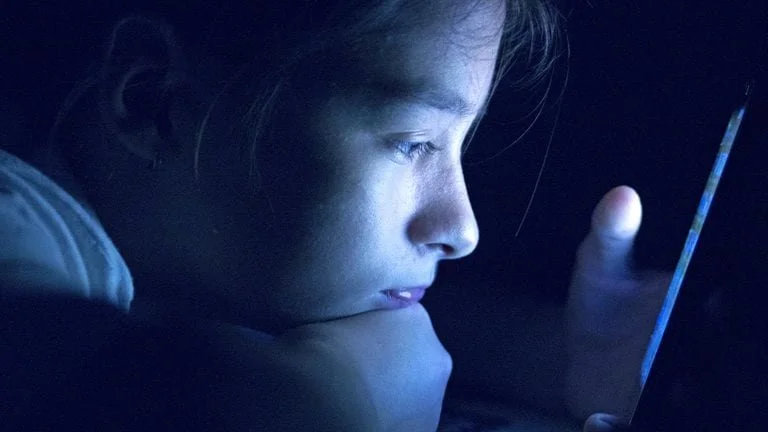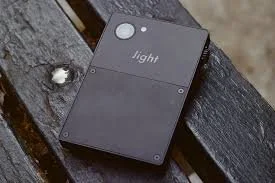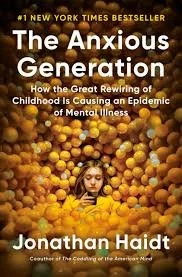
Social Media is Rewiring Young Minds
The Neuroscience of a Generation Left Behind

Though the claim is bold, the reality is grounded in neuroscience: Expansions in social media and harmful digital behavior is fundamentally altering the developing brains of children and teens for the worse. Through this page I would like to present a scientifically grounded exploration of how algorithm-driven social media impacts the developing brain. I will draw from primary research, meta-analysis, personal experience, and first-hand accounts from young people. Together, we will examine how particular platforms incentivize behaviors, contribute to mental health struggles, and disrupt essential developmental processes in Generation Z and Generation Alpha.
The Science
JAMA Pediatrics, an international peer-reviewed journal, published a paper in January 2023 titled “Association of Habitual Checking Behaviors on Social Media With Longitudinal Functional Brain Development”. This cohort study of 169 sixth and seventh grade students found that habitual checking of social media in early adolescence may be longitudinally associated with “changes in neural sensitivity to anticipation of social rewards and punishments, which could have implications for psychological adjustment” (Maza et al. 2023). Essentially showing that there is something different about children’s brains who use social media habitually, and it may be something that affects their psychology or development. The paper goes on to argue that the unprecedented and unregulated opportunity for social interaction while the brain is uniquely sensitive to social feedback, may be a mechanism for the dysfunction that is seen in affected adolescents.
The images depicted to the right show significant difference in the functional activation levels in the left amygdala, right amygdala, right anterior insula, and the left dorsolateral prefrontal cortex (Maza).
The affected areas, broadly speaking, help to regulate emotional responses like stress and fear, exert executive control, and the processing of emotional signals and interoceptive (internal) signals from the body like when you are hungry, sick, full, anxious, etc. To be clear, functional activation in these regions is not enough to clearly outline a mechanism of how upregulation (the overstimulation of these structures) impairs social and neural development. This study does however, note significant alterations in baseline functional activation, and the implication is that alterations in baseline functional activation may contribute to impairment, though this specific mechanism is not expressly clear.
Social Networking Site (SNS) addiction is noted to be prevalent in 6% of the global population according to a meta-analysis by Dr. Cecilia Cheng of the University of Hong Kong (Cheng et al. 2014). This meta analysis looked at 49 studies which all used qualitative assessment, and quantitative metrics to analyze social media site addiction. The standard quantitative measure for this is the Bergen Social Media Addiction Scale and the Bergen Facebook Addiction Scale, respectively called the BSMAS or BFAS. These studies looked at prevalence and self-identification of social media addiction. Some of the questions in the scale ask about discomfort when away from social media, attempts to remove or limit time on social media unsuccessfully, negative work/school actions resulting from social media use, and more. This meta-analysis highlights prevalence of social media use, and particularly social media misuse around the world. Less conservative estimates in the same meta-analysis suggests that SNS addiction may be 13% or even 25% based on different standards.
Now that we see a meta-analysis that shows the prevalence of SNS addiction, lets look at a study that measures the effect of SNS addiction on the brain. This study, titled, “Brain anatomy alterations associated with Social Networking Site (SNS) addiction” from USC department of psychology notes significantly low gray matter volume (GMV) in the left and right amygdala of patients with varying levels of SNS addiction. The paper goes on to describe their findings: “We specifically show that the GMV of the amygdala is negatively associated with SNS addiction scores. Hence, people with high SNS addiction scores have a pruned amygdala, which is presumably involved in generating strong impulsive behaviors” (He et al. 2017).
It is my hope that the combination of these studies paint a scientifically grounded argument about social media misuse, and the kinds of serious ramifications that social media addiction and overuse have on our populations, particularly adolescents. We can see that numerous brain regions are implicated in reward-seeking social media behavior, we see that large chunks of our population are susceptible to social media site addictions, and we see the negative neuroscientific consequences of SNS addiction. Each of these individual papers alone point to negative affects of social media addiction, but when viewed as a whole, we see a picture of a largely ignored health and addiction crisis affecting our most vulnerable
.
Vulnerability
Adolescents are particularly vulnerable to addiction. This claim is well-founded and often mentioned in reference to substance abuse disorders. Three major brain regions are often referenced in relation to substance use disorders: the amygdala, hippocampi, and nucleus accumbens. In vulnerable populations such as youth with a positive family history of substance abuse these regions, specifically amygdalar volume, are affected. This points to the idea that poor amygdalar function may be related to risk for developing more serious addictions (Squeglia et al. 2017)
When we pair these findings (that poor amygdalar function is related to risk of substance use disorder) with the findings that social media use is related to poor amygdalar function, we see a picture being painted that heavy social media use can increase an already vulnerable population’s risk for more serious addictions.
Social media can contribute to addictive behavior with substances or other activities. Addiction is a brain process focused on anything that fulfills a craving, not just one specific thing. Therefore, it is not surprising to see teens who start to experience addiction issues with other substances in addition to social media — and the data seems to be supporting that notion
The Crisis is Obvious
Neuroscientific mechanisms and explanations are important, but we can already see the damage clearly
Teen suicide is on the rise (Charlie Health). Exacerbated by financial crises like that in 2008 as well as the pandemic in 2020. It is difficult to look at one cause for the increase in teen suicide, and certainly many factors are to blame. I do not intend to imply causation by correlation, however I do intend to make the connection between these trends of increased depression, self harm, and suicide, with the experience of social media that we all likely already know. The mental health crisis in our adolescents will continue to be investigated, and specific mechanisms for these findings will be articulated further - But for right now, I would like to try to make very clear the first person experience of exploitative social media, and hopefully paint a picture of how these kinds of digital experiences are so obviously detrimental in an immediate way. If social media were a pill that our adolescents were taking en masse, and we saw the kinds of generational trends that we are seeing, we would be far more cautious and scrutinous in our dealings with it.
I would also like to note that social media as a form of content is not inherently harmful. Like all things, it depends on the behavior associated with it. There are plenty of ways to live comfortably with some forms of social media, and I will also describe those possibilities later on.
“Show me the incentive, I’ll show you the outcome”
Social media algorithms are optimized for engagement. In social media content, specifically short form content as seen in platforms like TikTok and Youtube Shorts, engagement can be tracked through different forms. These metrics are things like time spent on the video, opening the comments section, commenting, liking, and though it is not proven to be actively utilized, the fine print in TikTok’s user agreement allows for biometric (facial and voice) data to be collected. Meaning it may be possible that certain platforms are reading facial expressions in response to content and using that to curate more engaging content.
This figure shows a positive linear relationship between R amygdala activation and habitual checking behavior. Subsequent figures show positive linear relationships with other brain structure activation (see A in figures)
Teen deaths from suicide per 100,000 deaths from 1999 to 2021
Teen and adult use of social networking sites from 2000 to 2013
What can we do?
Engagement does not equal enjoyment.
Imagine for a moment that you were a corporate executive for TikTok. If your goal was to increase engagement, with no other concern for other aspects of the media experience, it would not matter what kind of engagement you were fostering. Emotions that correspond with high engagement can range from intellectual interest, shock, anger, frustration, sexual attraction, curiosity, and more. In other words, what makes you stay and watch something is not always something positive - and that isn’t inherently bad. It is important to see things that make you upset, or to hear about news that may be disturbing. But analyses show that our brains react overwhelmingly positively to drama or outrage as compared to more stable emotional states. Bursts of outrage online such as “venting” in the comments section has been studied to be cathartic feeling in the short term, but “makes us feel worse in the long run” states Dr. Ryan Martin of University of Wisconsin (Martin et al. 2012 ). This paper showed that more online outrage behavior did in fact satisfy users in the short term, but promoted maladaptive and more frequent anger behaviors in the long run.(Martin)
This is important because the TikTok executive does not care about the long run. The incentive of these sites is to garner the most possible engagement through any means necessary. This means that our brain, which is hardwired to react positively to emotions like anger, fear, and outrage, is being inundated with stimuli which satisfy this desire and promote activation of neurochemical systems which are related to reward. When we allow the content we view to be controlled by a mechanism which has no regard for our well-being, we will be influenced by it and that influence will not necessarily align with our interests.
In children and teenagers, having to deal with the increased amount of stress and anger that is associated with frequent use of algorithmic content almost certainly has implications on their daily life and development. In a traditional childhood with no social media, socialization occurs through in person interaction. This interaction is how children learn what kind of behaviors are socially acceptable, and their nervous system learns how to respond to emotions that come up in the turbulent teenage years. Embarrassment, shame, anger, confusion are all normal emotions to feel during adolescence - however when we rig our social behaviors so that 80% of our interaction with other people is online, our brains don’t know the difference. Surely we can outwardly recognize the difference between digital social interaction and in-person social interaction, but these differences are harder to recognize at the deep neural level. When we let even 50% of our social interactions be guided by this digital consumption (IE your screen time is 2 hours and your in person interaction is 2 hours) it is no surprise that our emotional regulation is severely altered. Children and teenagers who use social media to communicate, or to be entertained, are hijacking their nervous system’s natural response to social stimuli. They learn to communicate in outrage, or they overestimate the ridicule they are going to experience by making a mistake. These emotions, particularly in a population which is already insecure and trying to determine their identity, are at best making the lives of adolescents more stressful, and at worst may be responsible for the severe mental health and suicide crisis that we are witnessing.
What is Gen Z and Gen A Saying?
Below is a video of Buxton School, a preparatory high school in Massachusetts , and how they decided to remove smartphones from their campus. To enable students to still be able to communicate, they opted instead to give all of their students and teachers “Light Phones”. Light phones are an intentionally non-smart device that do not have access to the internet. The students’ reactions, despite what many may expect, are overwhelmingly positive.
Like most things, there are many different ways to reduce the affects of social media addiction, and not everyone agrees with them. Some of the suggestions are as follows:
Legislation:
Some proponents of legislation against certain practices by social media corporations cite examples of when the government stepped in to legislate cigarettes, or gambling. The government intervention in cigarette industries was largely successful (however we see many of the executives still thriving in social media and highly-processed food industries).
Age verification enforcement: Make sites that have algorithmic content age-restricted, and actually enforce it. Most social media sites already set their age limit to 13 years old as a minimum, but there is no actual way to verify their users are that age, and very little enforcement against activity of younger children on their sites, often unsupervised.
Mandated screen time caps: Tiktok already has a feature that shows you a video once you reach a certain point in your feed that seems “unhealthy” . If the site knows that this amount of social media use is damaging to children, it should stop the ability for children under 13 to continue using the site for the day.
Transparency Laws: Social media companies should be releasing data regarding their user base and the frequency of children and adolescent use.
Personal/Parenting Solutions:
No smart phone until a certain age: It is difficult to keep a child away from smart technology especially when so many other children begin as early as 2 or 3 with a smart-device like a touchscreen video-player, and 7-8 with a personal autonomous smart-phone. Jonathan Haidt, author of “The Anxious Generation” recommends that to mediate the FOMO affect, parents should collaborate with other parents of their children’s’ friends to make a group of kids who don’t use smart devices, and instead to encourage them to play outside, stay up late on weekends, go to each others’ houses and engage in typical child development activities, all of which exist outside of the reach of screens.
Communication about restrictions: Communicating with your child about the reason they aren’t allowed to use screens, or have their own autonomous device is very important. The decision needs to be made together so that the child can feel empowered, and not deprived by their lack of technology compared to their friends.
Model healthy behavior: Much of this article has been about children and their susceptibility to addictive screen behaviors, but adults are victim too. If your child sees you doing nothing for 5 hours except look at your phone, they are far more likely to replicate that behavior, or to point out hypocrisy when you try to enforce limits on their use.
Dumb Phones:
Dumb phones are a more recent trend in technology that intentionally limits the amount of features on a phone. Our modern world makes it seem almost necessary to have the entire internet in your pocket, and to be 100% accessible 100% of the time, the dumb phone is a rejection of these standards. Most dumb phones are designed to either completely have the internet removed, or to at least limit the ease and comfort of consistent use. The ideology of most companies in the dumb phone industry seem to promote their phones as intentional tools to make life easier, and not to suck you in. Thus, most dumb phones still have the necessary features to exist in modern life, like GPS, music, text/call, voicemail, a camera, etc. They lack things like an app store, the internet, email, streaming services. It is my opinion that more people, and more children and teens should embrace these kinds of phones.
Reading recommendations:
10 Arguments for Deleting Your Social Media Accounts Right Now - Jaron Lanier
The Anxious Generation - Jonathan Haidt
So You’ve Been Publicly Shamed - Jon Ronson
Digital Minimalism: Choosing a Focused Life in a Noisy World - Cal Newport
E Unibus Pluram: Television and US Fiction - David Foster Wallace
August Lamm’s newsletter “You Dont Need a Smartphone” <— excerpt, available for purchase in full here
As a Gen Zer myself, I have struggled with smartphone and social media addiction more than most people — but I do not feel particularly unique. Nearly all of my friends have expressed disinterest in the way they currently use social media. I have heard complaints, and frequently complained myself of how anti-social our generation and the generation below us are. Situations that used to be filled with pleasant small talk, or brain-picking, is now mostly silent, classrooms seem less chatty, there are less kids playing on the street in my neighborhood. I can’t help but feel that the lack of these small moments of community are indicative of some greater social loneliness crisis. Most teenagers don’t describe their endless scrolling as “fun” — in fact 83% of Gen Z describes having an “unhealthy relationship with their phone” (Winston et al. 2024).
I think the most important thing that we can do is to make more and better personal decisions about how we want to live. Once we are able to recognize something as negative, we need to clearly identify how we want to live with it. Social media likely isn’t going anywhere soon and it is up to us, whether you are a parent, teen, child, teacher, researcher, or whomever else reading this, to decide the hold that we want social media and entertainment to have in our lives.
We can see from both scientific evidence, and personal experiences that our current technological systems at best neglect, and at worst, target the mental health of our youth. Unless we as a society alter something fundamental about social media and entertainment industries and the access our children have to content - their lives will continue to get worse and worse. Social change in this direction is something that I think is really difficult, and may be something that needs to get worse before it gets better, but I believe that there is a very strong case made here, and in many other pieces of literature that show something deeply troubling about the path we are on.
“…at a certain point we’re gonna have to build up some machinery, inside our guts, to help us deal with this. Because the technology is just gonna get better and better and better and better. And it’s gonna get easier and easier, and more and more convenient, and more and more pleasurable, to be alone with images on a screen, given to us by people who do not love us but want our money. Which is all right. In low doses, right? but if that’s the basic main staple of your diet, you’re gonna die. In a meaningful way, you’re going to die” -David F. Wallace 2010
Cheng, C. & Li, A. Y. Internet Addiction Prevalence and Quality of (Real) Life: A Meta-Analysis of 31 Nations Across Seven World Regions. Cyberpsychology, Behavior, and Social Networking 17, 755–760 (2014).
He, Q., Turel, O. & Bechara, A. Brain anatomy alterations associated with Social Networking Site (SNS) addiction. Scientific Reports 7, 45064 (2017).
Squeglia, L. M. & Cservenka, A. Adolescence and Drug Use Vulnerability: Findings from Neuroimaging. Current opinion in behavioral sciences 13, 164 (2017).
Beaton, M. M., Amanda Lenhart, Sandra Cortesi, Urs Gasser, Maeve Duggan, Aaron Smith and Meredith. Part 1: Teens and Social Media Use. Pew Research Center https://www.pewresearch.org/internet/2013/05/21/part-1-teens-and-social-media-use/ (2013).
Maza, M. T. et al. Association of Habitual Checking Behaviors on Social Media With Longitudinal Functional Brain Development. JAMA Pediatrics 177, 160–167 (2023).
The US Teen Suicide Rate Is On The Rise. Charlie Health https://www.charliehealth.com/research/the-us-teen-suicide-rate-is-on-the-rise.
Martin, R., Coyier, K., Vansistine, L. & Schroeder, K. Anger on the Internet: The Perceived Value of Rant-Sites. Cyberpsychology, behavior and social networking 16, (2012).
Winston, J. Bepresent 2024 Digital Wellness Report. BePresent (2024). Available at: https://www.bepresentapp.com/post/bepresent-2024-digital-wellness-report. (Accessed: 23rd November 2024)

















